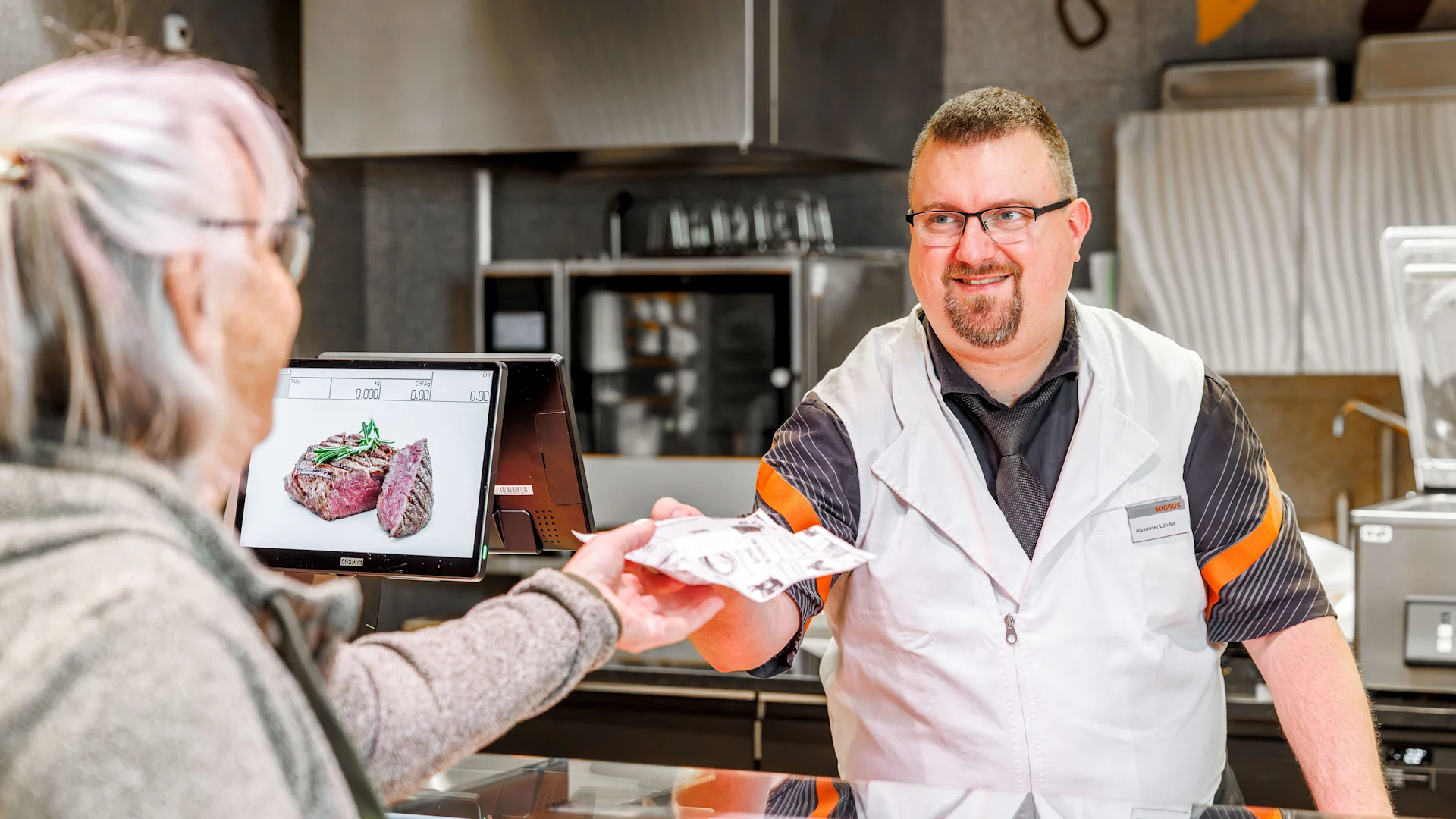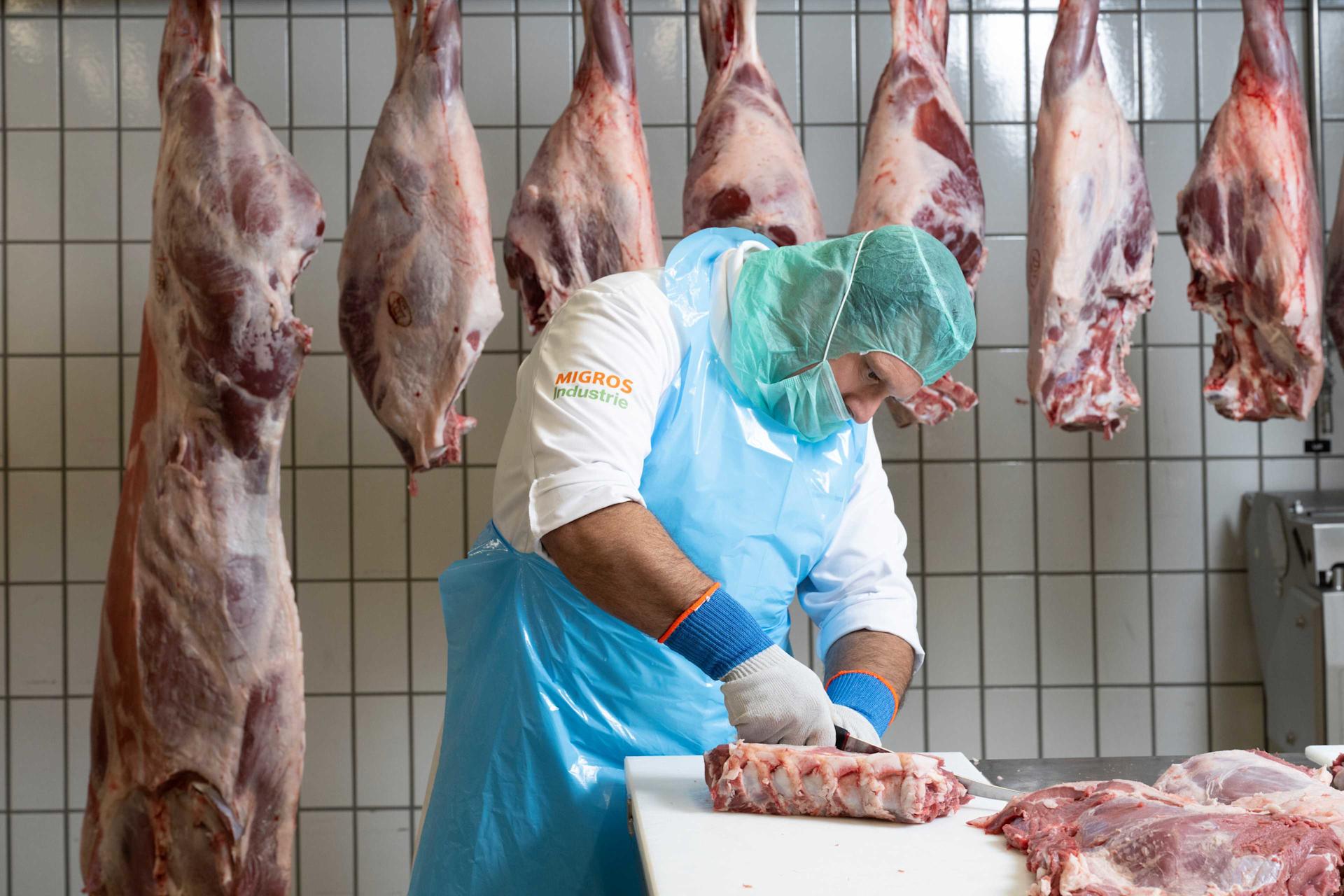
Supermarket
A look behind the meat counter
What customers want in the run-up to the festive season and the mistakes many people make when preparing meat.
navigation

Work environment
Marco Eisenlohr processes meat into sausages and steaks at Micarna. What he loves about his job and the prejudices he has to contend with as a butcher. Fourteen questions.
"The variety: I not only cut meat and stuff sausages, but also make spice mixes and actively work on the development of new meat products. For example, I developed a pizza and curry bratwurst sausage."
"Many people still have the image of the butcher wearing a bloody apron and holding a meat cleaver. But that's an outdated image. Today we wear clean white clothes. In addition to meat processing, the job also includes production planning, quality assurance and training apprentices."
"Yes. The fact that I’m a butcher comes up a lot. Even at school, my classmates couldn’t understand why I wanted to learn this profession. My mother-in-law always told my wife not to marry a butcher. But she did anyway. My 14-year-old son now also wants to train as a butcher. Just like me, he's very interested in the craft."
"Ensuring that all parts of an animal are utilised as well as possible and minimising waste. When processing pieces of meat, it's also important to take special care to ensure that the most popular cuts, like the fillet, remain intact. In this way, we ensure that only the highest quality cuts go on sale."
"Good meat doesn’t smell bad. In addition, our production area is always refrigerated so that the meat retains its quality. As a result, it doesn’t smell much."
"To be honest, sausage! You can’t go far wrong with a good piece of meat, but it takes skill to make a good sausage. I also love trying the sausage creations of other butchers."
"Many people no longer know how to cook ragouts or stews. Or they simply don’t have the time to prepare them. Both dishes are very tasty if they're made properly. I often cook ragout at home, and my children love it."
"Everyone should decide for themselves. There's no right or wrong. If I don’t want to eat meat, I go for vegetables and cheese instead."
"It’s part of being a butcher. I last slaughtered an animal about 15 years ago. It wasn’t my cup of tea, but if we want to eat meat, someone has to do it."
"I think it’s very important. They're living beings that we need to look after. In addition to being kept in a species-appropriate manner, animals must also be transported carefully and over the shortest possible distance before being slaughtered prudently and professionally."
"My great-uncle had a butcher’s shop. As a child, I used to fry sausages there every Friday to earn some pocket money. That’s when I developed my passion for meat. I wanted to know where it comes from and how meat is processed properly. As a teenager, I did an apprenticeship as a butcher."
"Yes, I can quickly tell by touch whether a piece of meat contains a lot of fat and whether it's tender. At Micarna, every cut is checked before being processed. That’s why the quality is always right."
"Beef is naturally red. That's because the animals eat grass and hay, which contain iron and darken the colour of the meat. The meat of calves is pink because they only drink milk."
"I can tell the quality of meat by its colour. The darker a piece of meat is, the older it is and the more often it has been exposed to differences in temperature and light. Because I work with meat every day, I can recognise this and only buy very fresh meat. For example, if beef has a dark brown colour, I don’t buy it."
Discover exciting stories about all aspects of Migros, our commitment and the people behind it. We also provide practical advice for everyday life.